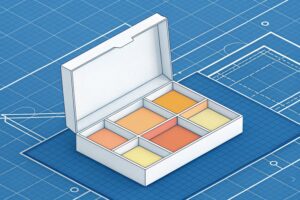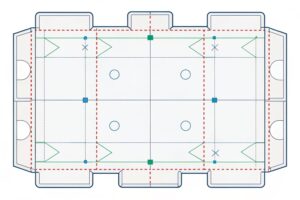Retail moves fast and shelf space is tight. Old displays waste time, hurt sales, and annoy buyers. I use new PDQs to fix this.
PDQs had to evolve because modern retail is faster, greener, and more data driven. Brands and retailers need displays that set up quickly, save labor, support sustainability goals, and still catch shoppers’ eyes.
Cardboard displays sit at the center of this change. I run a factory in China with three production lines, and we ship custom PDQ displays to the United States, Canada, the United Kingdom, and Australia. In North America, the market is mature, so retailers expect stable quality and fast execution. In Asia-Pacific, packaging value already reaches hundreds of billions of dollars, and modern retail grows very fast, so brands use PDQs to enter new chains. In Europe, buyers push hard for sustainable solutions and strict recycling rules. Across these regions, PDQs evolved from simple trays into smarter, stronger, greener displays that support quick setup, high impact printing, and data driven marketing.
What does PDQ mean in slang?
Many buyers know PDQ as a joke, not as a tool. This gap creates confusion and slow decisions when we talk about new cardboard displays.
In slang, PDQ means “pretty damned quick”, often softened to “pretty darn quick”. People say it when they want something done right now, with no delay and no excuses.
How the slang meaning shapes real expectations
When a US buyer first wrote “I need this PDQ”, I felt stressed. I thought it was only a funny phrase. Then I saw fixed launch dates, tight booking windows, and penalties for late delivery. The slang meaning became very real in my daily work, because “pretty darn quick” now describes how my team must move from drawing to sample to mass production.
| Aspect | Slang Meaning | What It Means in My Work |
|---|---|---|
| Time | Do it right now | Short design cycles and fast sample approval |
| Attitude | No excuses, no delay | Clear project plans and honest lead times |
| Result | Visible action, not talk | Display on the floor, not stuck in a warehouse |
PDQ as slang sets a standard for speed inside my factory. When we design a new display for FMCG snacks, cosmetics, or personal care products, we test if workers in a busy supermarket can set it up fast. We check clear folds, simple locking tabs, and flat-pack shipping that saves freight. If assembly takes more than one or two minutes, I know the display does not match the true spirit of PDQ and it will lose in a crowded POP market where floor displays already take more than forty percent of share.
What did PDQ stand for?
When I work with new clients, they often ask what PDQ really stands for. If I skip this step, later design talks become messy.
PDQ first stood for “pretty damned quick” in everyday English. In packaging and display work, many people now reuse PDQ as “pretty darn quick” or “product displayed quickly”.
From one phrase to many working definitions
The original phrase “pretty damned quick” came from everyday speech. People softened it to “pretty darn quick” so it feels polite in business talk. When I speak with buyers in different countries, they do not always share the same background, so I use simple language. I explain that PDQ started as a speed phrase, then moved into packaging, and now guides how we design fast, retail ready displays.
| Version of PDQ | Full Phrase | Where I Hear It Most | Main Focus in Projects |
|---|---|---|---|
| Classic slang | Pretty damned quick | Older buyers, casual talk | Pure speed and urgency |
| Polite business version | Pretty darn quick | Emails, meetings, specs | Fast response and delivery |
| Packaging version | Product displayed quickly | Engineers, planners | Setup time and shelf visibility |
These versions sound simple, but they affect how I plan projects. When a buyer says “pretty darn quick”, I hear pressure on lead time and logistics. When an engineer talks about “product displayed quickly”, I hear a request for clear structure, stable strength, and easy packing standards. This is why I link PDQ meanings to display types. Floor displays, countertop units, pallet displays, and shelf trays each need different board grades and joint systems. Yet they all share one rule. They must help staff move from box to full display in a short time, so the brand can catch attention during a short promotion window in a market that grows about five to seven percent each year.
What does PDQ mean at Walmart?
Walmart uses PDQ in a very specific way. If I ignore their rules, my displays fail tests, lose floor space, and miss important launch windows.
At Walmart, PDQ means pre-packed, “pretty darn quick” retail-ready trays or displays. Staff move them from truck to floor in minutes, open simple tear lines, and start selling with low labor cost.
PDQ as retail-ready packaging in Walmart stores
In Walmart language, a PDQ is a small, retail-ready unit that goes straight from pallet to selling position. It can sit on a shelf, on a quarter pallet, or on a checkout counter. The unit is usually corrugated cardboard, pre-packed with product, and marked with simple open and tear lines. Store staff do not have time for complex assembly, so the display must stand by itself, show the brand clearly, and protect items during a long trip from factory to store.
| PDQ Type | Store Location | Main Use | Key Design Focus |
|---|---|---|---|
| Tray PDQ | Standard shelf or endcap | Fast shelf change | Perforated lid, strong front wall |
| Counter PDQ | Checkout and service | Impulse and add-on sales | Small footprint, bold branding |
| Floor PDQ | Aisle or promo zone | Feature and seasonal items | Stable base, pallet footprint, high load |
For a hunting brand like David’s, heavy crossbows and tools add extra risk. If the PDQ bends or leans, the product looks unsafe and staff hide it in the back room. So my team runs strength tests, stacking tests, and transport tests on each new Walmart PDQ. We balance flute type, wall thickness, and printing method, while we watch material costs and new tariffs on paper and board. When we get it right, the PDQ arrives clean, opens in seconds, and survives the whole season. That is what “pretty darn quick” means in real life inside a high volume chain.
What does a PDQ stand for?
Outside Walmart, buyers still ask what a PDQ really is. If I define it well, they see how it fits their global cardboard display strategy.
In modern retail, a PDQ usually stands for a small corrugated display unit that gets “product displayed quickly” in front of shoppers, often in impulse or promotional spaces.
PDQs inside a growing, greener display market
Today I see a PDQ as the bridge between a shipping box and a full POP display. It is small, often pre-packed, and lives close to the shopper. Global display packaging value sits around the mid-twenties in billions of US dollars and is forecast to pass forty billion before 2035. Corrugated board as a whole moves from about one hundred sixty to more than three hundred billion in value over the next decade, with Asia-Pacific growing fastest and North America still strong. PDQs ride on this wave, especially in FMCG, cosmetics, electronics, toys, and hunting tools.
| Market or Trend | Impact on PDQs | How I Design for It |
|---|---|---|
| Sustainability focus | More demand for recyclable displays | Use recycled board, water based inks |
| Retail plus e-commerce | Need for strong but light structures | Flat-pack design, smart locking, load tests |
| Gen Z shoppers | Need for bold and creative visuals | High quality digital printing, 3D artwork |
| Cost pressure | Smaller budgets, tariff and pulp swings | Efficient die lines, shared parts, repeat use |
In my factory, PDQs evolved from simple one-off trays into modular systems. Some clients ask for QR codes and simple AR triggers that link to videos or hunting safety tips. Others want one base tray that works in a small pharmacy chain and also on a big box pallet. I keep the core idea simple. A PDQ must help staff display product quickly, keep the structure strong during transport, meet green goals, and support long term brand stories. If it does these jobs well, it becomes part of a stable reorder cycle that makes profit for both my client and my display business.
Conclusion
PDQs keep their fast spirit, but my cardboard displays now add strength, data, and sustainability so brands launch quicker and sell more with less waste.



